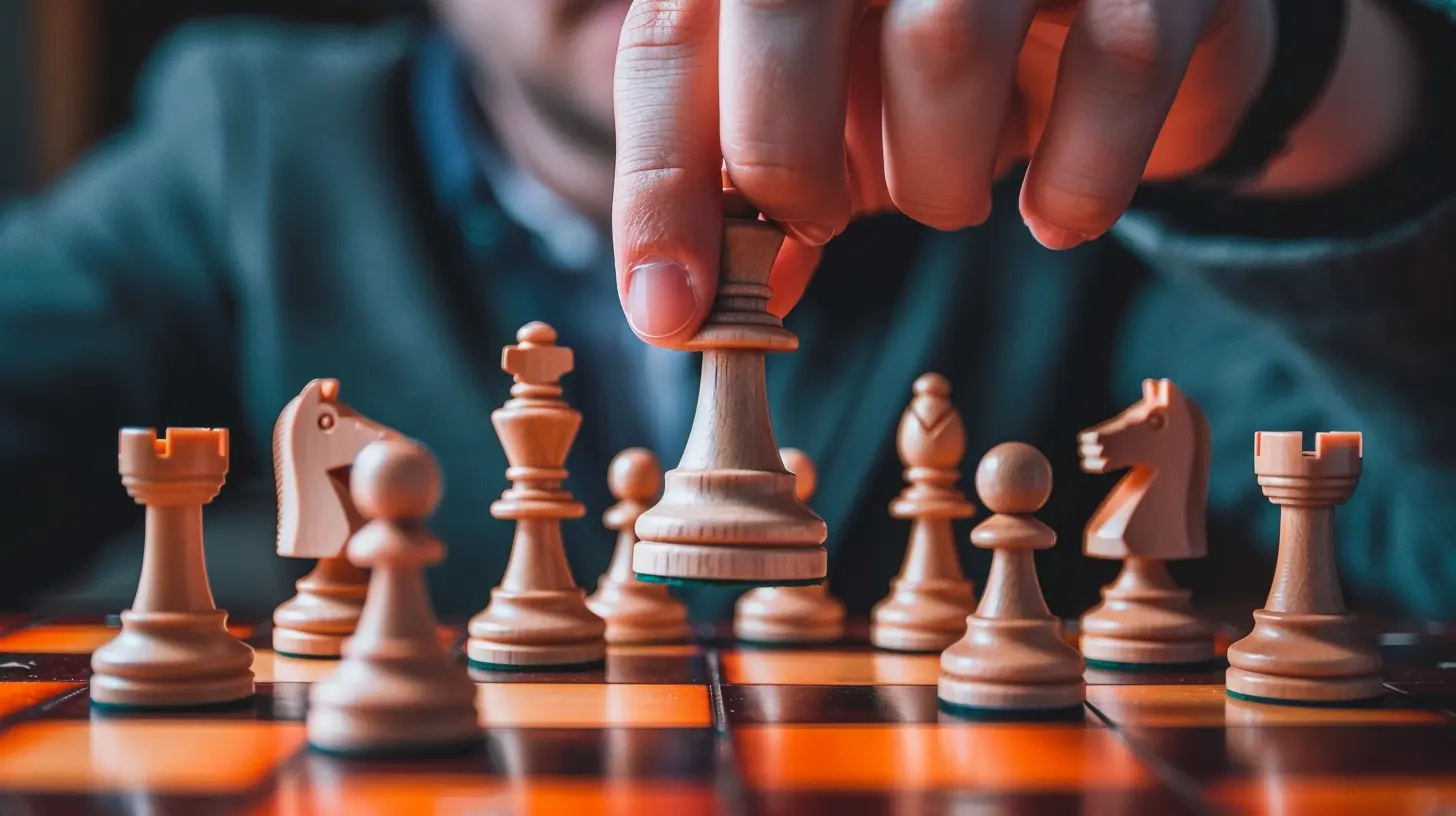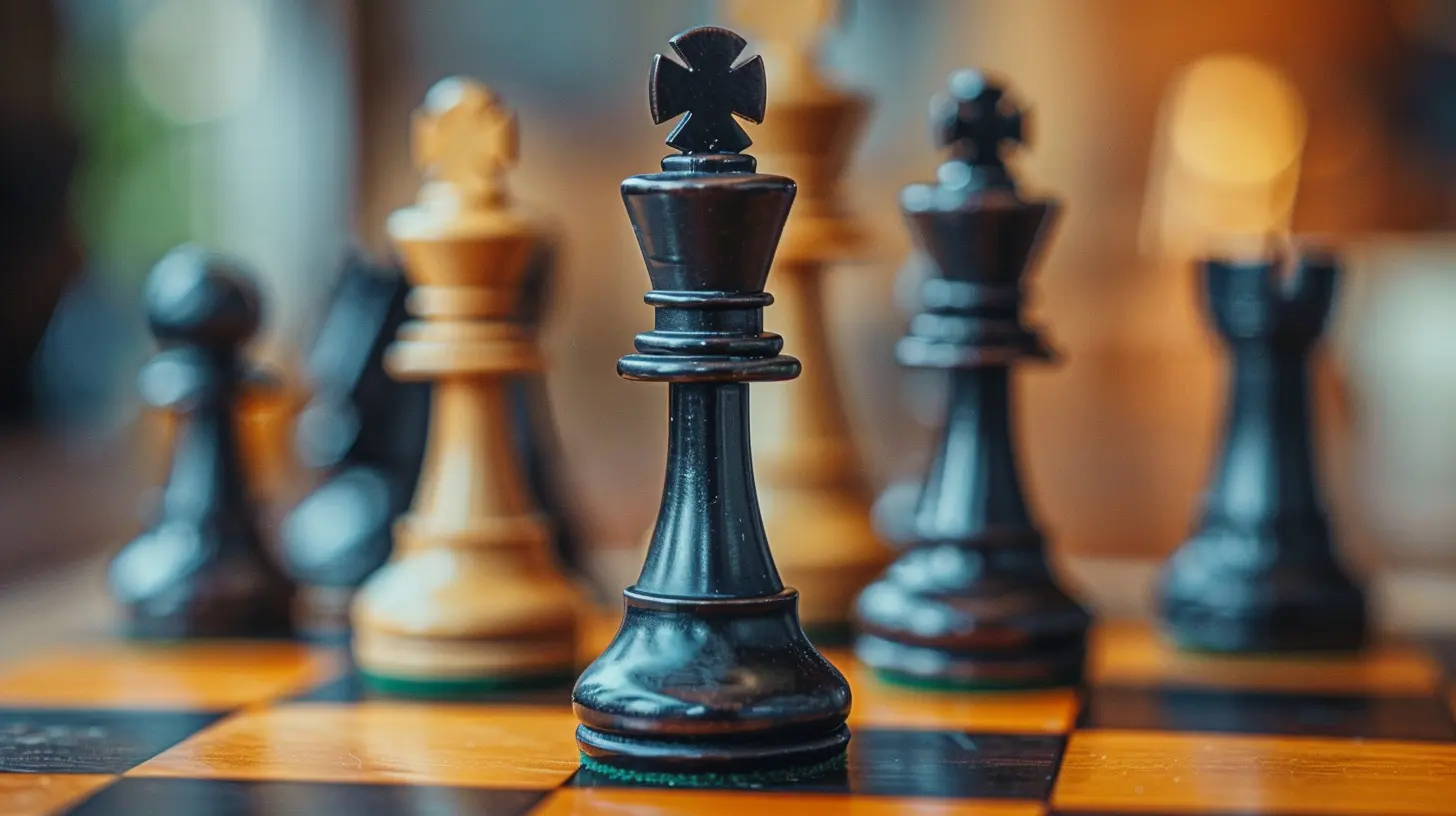Reading Opponents and Predicting Their Next Move
5 November 2025
Ever been in the heat of a game and thought, “I know exactly what they’re about to do”? That little spark of intuition—that moment when you’re one step ahead—is the magic of reading opponents and predicting their next move. It’s not just for poker pros or chess grandmasters. Whether you're grinding ranked matches in a fast-paced shooter, sneaking around in a stealth game, or outwitting your buddy in a casual board game, understanding your opponent can make all the difference.
Let’s break down how you can sharpen that sixth sense and become a mind-reader on the battlefield—figuratively, of course.
The Psychology Behind Reading Opponents
Okay, before we dive into tactics, let’s talk about what’s happening in your brain (and theirs). Reading an opponent isn’t about psychic powers—it’s psychology at work. Human beings are creatures of habit. And in games, especially when nerves kick in, players tend to follow patterns. They go for what feels familiar or safe.So, learning to recognize those patterns? That’s your golden ticket.
Think of it like music. The more you listen to a song, the easier it gets to predict the next note. Opponents, in a way, are playing their own song. Your job? Start humming along before they even strum the next chord.
Why Predicting Moves Matters So Much
You might be wondering—why even bother? Can’t skill and reflexes carry the day?Sure, being fast helps. But being smart is a game-changer. When you can anticipate your opponent’s next step, you start controlling the pace. You put them on the defensive. You stop reacting and start dictating.
Imagine you’re in a fighting game. Your opponent keeps jumping after throwing a low kick. Now you know what’s coming. So, instead of blocking again, you punish that jump with an anti-air move. That’s reading. That’s prediction. That’s domination.
Step 1: Learn to Observe Before You Act
Before you go all Sherlock Holmes, take a moment to just observe. Watch how they move. Study their habits. What do they do under pressure? How do they start each round or match?In games like Valorant, a player may always peek a certain corner the same way. In FIFA, maybe your opponent always cuts inside with their striker. Take mental notes.
Here’s a tip: Start every game with a “scouting period.” Use the first few minutes to assess rather than to rush. It’s like warming up your radar before launching into full analysis mode.
Step 2: Identify Patterns and Tendencies
Now that you’re observing, it’s time to look for patterns. Everyone has habits—even the pros.It could be something basic, like always reloading after a kill. Or maybe they panic build in the same way every time in Fortnite. These tiny, repeatable actions are your window into their mindset.
Keep an eye out for these:
- Opening moves – How do they start a match?
- Defensive behavior – Do they turtle up or get aggressive when pressured?
- Reaction to loss – Do they tilt and start making risky plays?
- Preferred routes or strategies – Same flank over and over? Same unit composition?
When you start seeing the matrix of someone’s behavior, you can begin to bend it to your will.
Step 3: Use Conditioning to Influence Their Decisions
This one’s next level.Once you figure out your opponent’s tendencies, you can start “conditioning” them. That means setting them up to expect one thing… and then doing another.
Let’s say in Street Fighter, you've been throwing low pokes every knockdown. Now, they're blocking low on reflex. Next time, mix it up with an overhead. Bam—caught them slipping.
You're training them to react, then punishing them for it. It’s psychological warfare, and you’re the commander.
Step 4: Analyze the Situation, Not Just the Player
Context is everything. Just because an opponent tends to act a certain way doesn’t mean they’ll always do it.Pressure, game state, timer—all of these influence decisions.
In strategy games like StarCraft II, a player might normally go for a 2-base early push. But if you scouted it last time and shut it down, they might pivot to an economic build. So, don’t just read the player—read the entire scenario.
Try asking yourself:
- What’s at stake right now?
- Are they ahead or behind?
- What’s the “safest” move for them?
- What would I do in their position?
Every game tells a story. You’ve got to flip the pages faster than your rival.
Step 5: Adapt Like a Chameleon
Reading opponents isn’t a one-time thing—it’s a loop. As you learn their moves, they also learn yours. So never get too comfortable.The best players constantly evolve. They start aggressive and then go defensive. They change their routes, switch tactics, and keep you guessing.
So, if you’ve figured out someone’s playstyle, test how flexible they are. Throw in a curveball. If they crumble, great. If not, it’s back to the drawing board.
The goal? Stay unpredictable while making them feel predictable.
Tools That Can Help You Analyze Opponents
In competitive gaming, knowledge is power. Luckily, a lot of games provide tools to help you study opponents.- Replays and Match History – These are gold mines. Watch past matches and break down what your opponent did right and wrong.
- In-Game Stats – Stats like heatmaps, shot accuracy, or positioning trends can expose the habits you might miss live.
- Spectating – If you can observe other players without engaging, do it. It’s a great way to learn without the pressure.
Even outside of games, just reading forums, watching streamers, or joining discussions can sharpen your predictive mind.
Common Mistakes to Avoid
Let’s be real—reading opponents isn’t foolproof. Here are a few traps you want to sidestep.1. Overcommitting to a Read
Just because something happened once doesn’t mean it’ll repeat. Don’t bet the whole house on a single read. Leave some room for error.2. Ignoring Your Own Predictability
As you analyze them, they’re analyzing you right back. Be aware of your habits too.3. Tunnel Vision
Staring down only one player or one spot makes you blind to the bigger picture. Keep your awareness wide.Real Examples of Predictive Play in Different Games
Let’s bring this to life with some real-game scenarios.Chess
In chess, grandmasters don’t just know openings—they predict opponent responses five moves ahead. If White opens with e4, they already have counters in mind for every possible reply.FPS Games (e.g., CS:GO)
Holding angles, predicting peeks, timing flanks—these are all about reading your opponent's rhythm. If a player keeps rushing B site, you start stacking it early.MOBAs (e.g., League of Legends)
Jungle pathing, lane presence, ward placements—all can be anticipated by savvy players. If the enemy jungler ganks top every 3 minutes, you know when to ping like crazy.Fighting Games
Mix-ups, frame traps, and punishing unsafe moves all rely on reading what your opponent will try next. A single correct read can win you the whole match.The Mental Edge: Confidence and Intuition
Once you get the hang of reading, your confidence soars. You stop reacting in fear. You lead the dance.But don’t ignore your gut either. Intuition forms from experience. Sometimes, your brain picks up on patterns you’re not even aware of yet. Trust it.
You’ll find that the more you play—and more importantly—the more you think while you play, the stronger your predictive instincts become. It’s like building a muscle.
Practice Makes Predictable Perfect
Here’s the truth: nobody becomes a mind-reader overnight. You’ll mess up reads. You’ll guess wrong. But every mistake is a lesson.Start small. Pick one thing to focus on—maybe spotting common movement habits. Then layer in more as you get comfortable.
Eventually, you’ll notice how your game sense expands. You won’t just play the game. You’ll play the player.
Final Thoughts
Reading opponents and predicting their next move is the ultimate skill that separates the good from the great. It’s about mindset, patience, psychology, and deliberate practice. Whether you're into card games, esports, or classic board games, the ability to get inside your opponent's head will always be your best weapon.So next time you fire up your favorite game, don’t just play harder—play smarter. Because the best move? Is the one your enemy never saw coming.
all images in this post were generated using AI tools
Category:
Gaming SkillsAuthor:

Kaitlyn Pace
Discussion
rate this article
1 comments
Ezra Young
Mastering reads: the chess player's secret to winning.
November 10, 2025 at 4:21 AM


